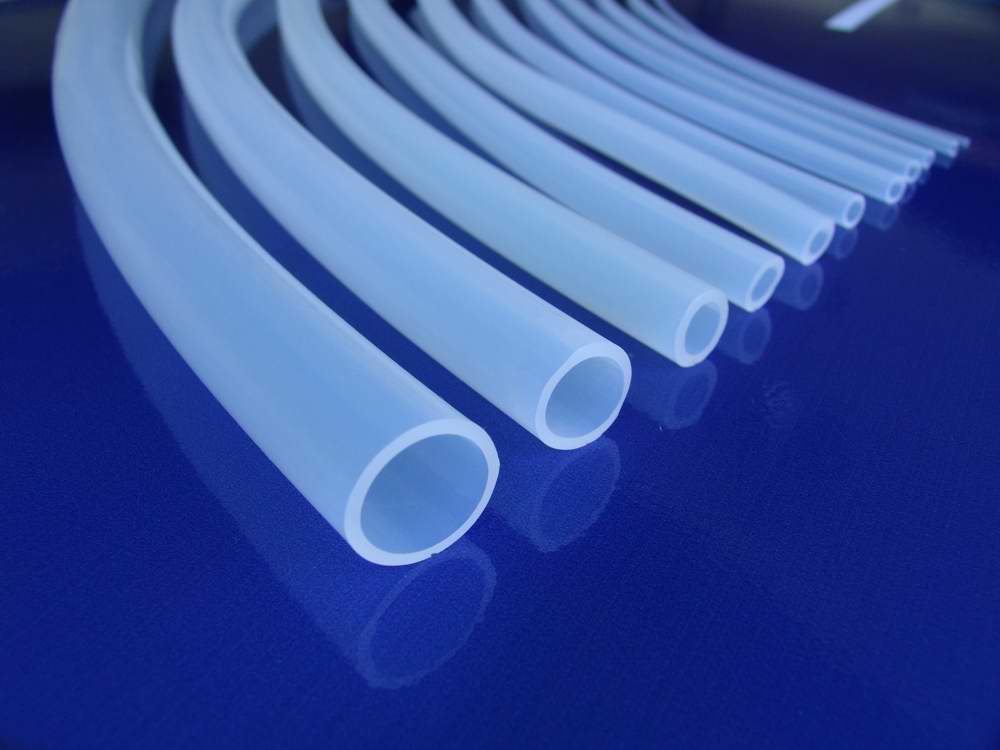In the realm of medical device manufacturing, the choice of tubing material directly impacts patient safety, operational efficiency, and long-term costs. While Thermoplastic Elastomers (TPE) have gained traction for their flexibility and initial affordability, medical-grade silicone tubing remains the gold standard for critical applications where safety, durability, and regulatory compliance are non-negotiable. As a leading Chinese manufacturer with over 40 years of expertise, Jinan Chensheng Medical Technology Co., Ltd. (www.jngxj.cn) specializes in high-performance silicone solutions tailored to the most demanding healthcare environments. This article explores why silicone outperforms TPE in safety and total cost of ownership, and how our capabilities as a trusted partner can elevate your supply chain.
![Medical Silicone Tubing vs TPE Tubing: When Silicone Delivers Better Safety and Total Cost Performance Medical Silicone Tubing vs TPE Tubing: When Silicone Delivers Better Safety and Total Cost Performance]()
Safety First: Non-Negotiable Biocompatibility and Stability
In medical settings, material integrity directly correlates with patient risk. Medical silicone tubing and TPE tubing differ drastically in their ability to maintain safety under rigorous conditions:
1. Biocompatibility: Silicone Sets the Standard
Medical-grade silicone is USP Class VI and ISO 10993 certified, ensuring it meets the highest biocompatibility requirements for prolonged contact with human tissue and fluids. Its inert molecular structure (silicon-oxygen backbone) prevents leaching of harmful substances, making it ideal for applications like:
Long-term implants (e.g., hydrocephalus drainage devices)
Critical fluid transfer (biopharmaceutical processing, IV administration)
Respiratory support (anesthesia circuits, ventilator tubing)
In contrast, TPE tubing’s biocompatibility is formulation-dependent. While some medical-grade TPEs meet basic standards, they often contain additives (e.g., plasticizers) that may leach over time, posing risks in sensitive applications like neonatal care or drug delivery.
2. Sterilization Resilience: Silicone Endures Repeated Cycles
Medical devices require frequent sterilization, and silicone excels here:
Temperature resistance: Silicone withstands autoclaving (134°C), ethylene oxide (EtO), and gamma irradiation without degradation, maintaining elasticity and structural integrity for >50 sterilization cycles.
TPE limitations: Most TPEs degrade after 15–20 cycles, with heat exposure (>140°C) causing brittleness or warping. This restricts TPE to single-use or low-sterilization scenarios, increasing waste and operational complexity.
3. Chemical Stability: Silicone Resists Harsh Environments
Medical tubing often contacts aggressive substances (disinfectants, pharmaceuticals, bodily fluids). Silicone’s chemical inertness ensures:
No swelling or cracking when exposed to alcohols, acids, or bases.
No absorption of fluid residues, reducing cross-contamination risks.
TPEs, by contrast, may degrade when exposed to organic solvents or high-pH solutions, compromising fluid purity and device lifespan.
![Medical Silicone Tubing vs TPE Tubing: When Silicone Delivers Better Safety and Total Cost Performance Medical Silicone Tubing vs TPE Tubing: When Silicone Delivers Better Safety and Total Cost Performance]()
Total Cost Performance: Silicone Delivers Long-Term Value
While TPE may have a lower upfront cost, silicone’s durability and reliability translate to lower total cost of ownership (TCO) over time. Here’s why:
1. Extended Lifespan Reduces Replacement Costs
Silicone tubing maintains performance for 3–5 years in reusable applications (e.g., surgical instruments, dialysis machines). TPE, with a typical lifespan of 1–2 years, requires frequent replacements—driving up material and labor costs. For high-volume facilities, this difference can result in 30–40% lower annual expenses with silicone.
2. Minimized Downtime and Waste
Silicone: Resists kinking, tearing, and fatigue from repeated flexing (e.g., peristaltic pump use), reducing unplanned downtime.
TPE: Prone to compression set and wear, leading to leaks, equipment malfunctions, and increased waste. A study by Medical Silicone Tube found TPE tubing in peristaltic pumps failed 2–3x faster than silicone alternatives.
3. Regulatory Compliance: Avoid Costly Delays
Silicone’s global regulatory acceptance (FDA, CE, NMPA) streamlines market access. Jinan Chensheng’s silicone products are manufactured in ISO 13485-certified facilities, with full traceability from raw materials to finished goods. TPEs, due to variable formulations, often require additional testing to meet regional standards—delaying time-to-market and increasing compliance costs.
Comparative Cost Analysis
Metric | Medical Silicone Tubing | TPE Tubing |
Initial cost per meter | Higher ($1.50–$3.00) | Lower ($0.80–$1.20) |
Service life | 3–5 years | 1–2 years |
Annual replacement cost | $0.30–$0.60/meter | $0.40–$1.20/meter |
Sterilization resilience | >50 cycles | 15–20 cycles |
Regulatory compliance | Pre-certified (USP Class VI/CE) | Application-specific testing required |
Jinan Chensheng: Your Trusted Partner for Medical Silicone Solutions
For over 40 years, Jinan Chensheng has pioneered medical silicone innovation. Our vertically integrated manufacturing model ensures unmatched quality, flexibility, and cost efficiency:
1. Comprehensive Product Portfolio
We offer customizable silicone tubing for every medical need:
Ultra-thin micro-tubing (e.g., lacrimal drainage tubes, 0.1mm wall thickness)
Reinforced braided tubing (high-pressure biopharmaceutical transfer)
Specialized assemblies (pediatric breathing circuits, dual-lumen gastric tubes)
OEM/ODM capabilities: From prototype to mass production, our engineering team collaborates with you to design tubing with precise durometers (30A–80A), surface treatments, and color-coding.
2. Uncompromising Quality Assurance
Cleanroom production:Class 7 (Class 10,000) cleanrooms and automated extrusion lines ensure particle-free manufacturing.
Rigorous testing: Every batch undergoes biocompatibility, tensile strength, and leak testing. Key certifications include:
3. Global Reach, Local Support
With exports to 30+ countries (Europe, Americas, Southeast Asia), we understand international logistics and regulatory nuances. Our team provides:
Dedicated account managers fluent in English, Spanish, and German.
Flexible MOQs (from 500 meters to bulk orders).
Fast lead times (15–20 days for standard products).
![Medical Silicone Tubing vs TPE Tubing: When Silicone Delivers Better Safety and Total Cost Performance Medical Silicone Tubing vs TPE Tubing: When Silicone Delivers Better Safety and Total Cost Performance]()
Take Action: Elevate Your Supply Chain with Jinan Chensheng
When safety, reliability, and long-term value matter, medical silicone tubing is the clear choice over TPE. As a national high-tech enterprise with decades of expertise, Jinan Chensheng delivers solutions that align with your quality standards and business goals.
Ready to optimize your medical tubing supply chain?
Trust Jinan Chensheng to deliver silicone tubing that safeguards patients, streamlines operations, and drives long-term profitability.
Jinan Chensheng Medical Technology Co., Ltd. – Where Innovation Meets Reliability Since 1978.












